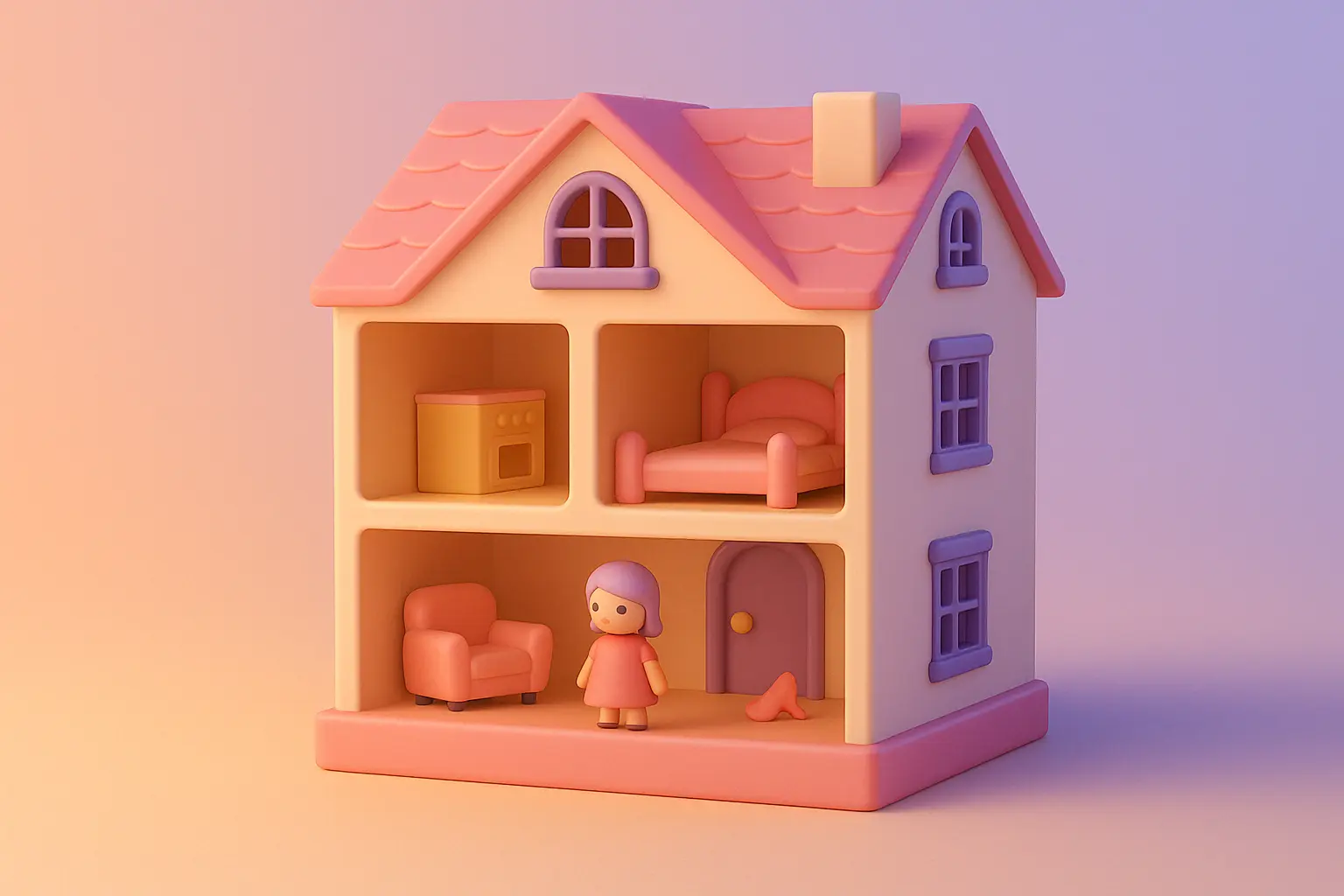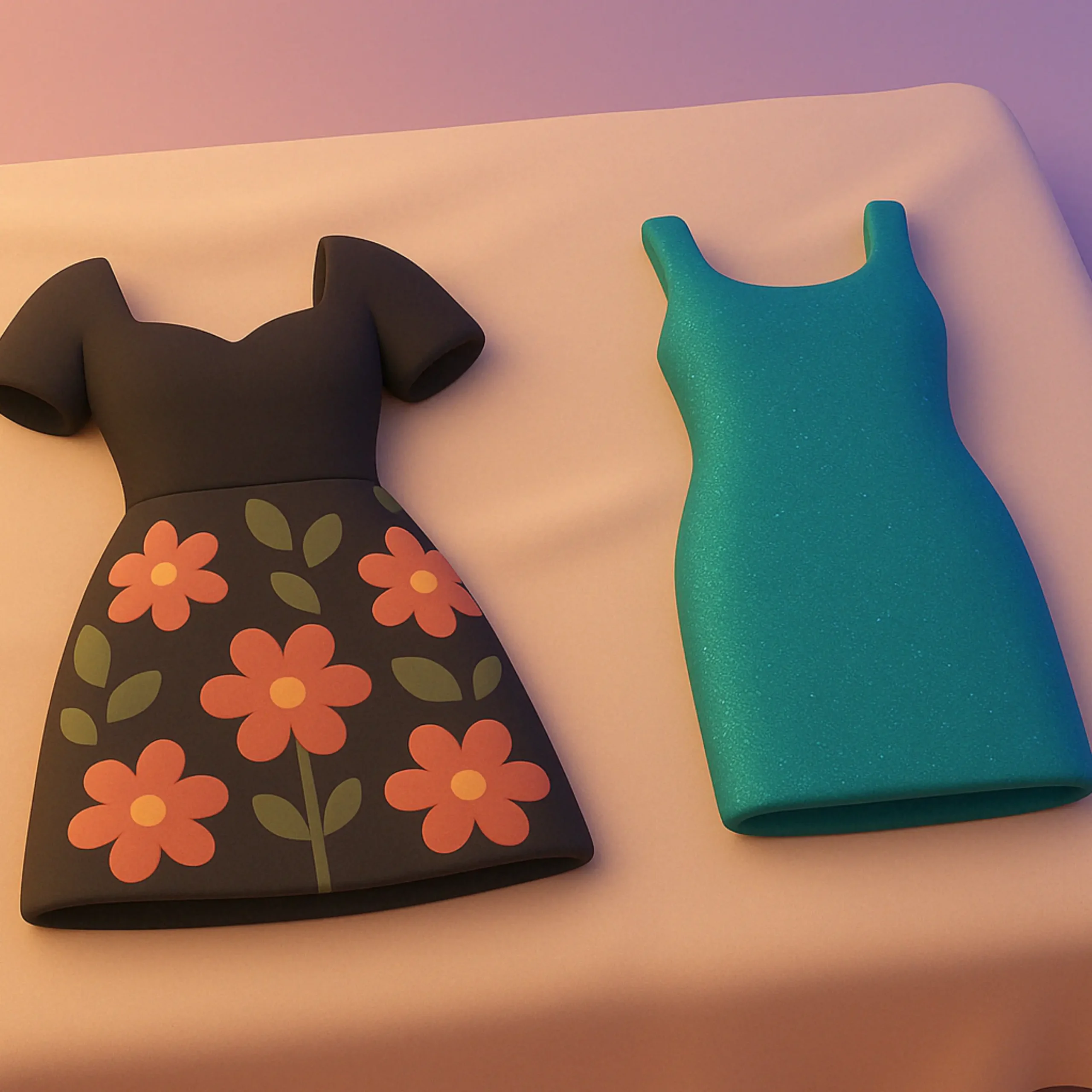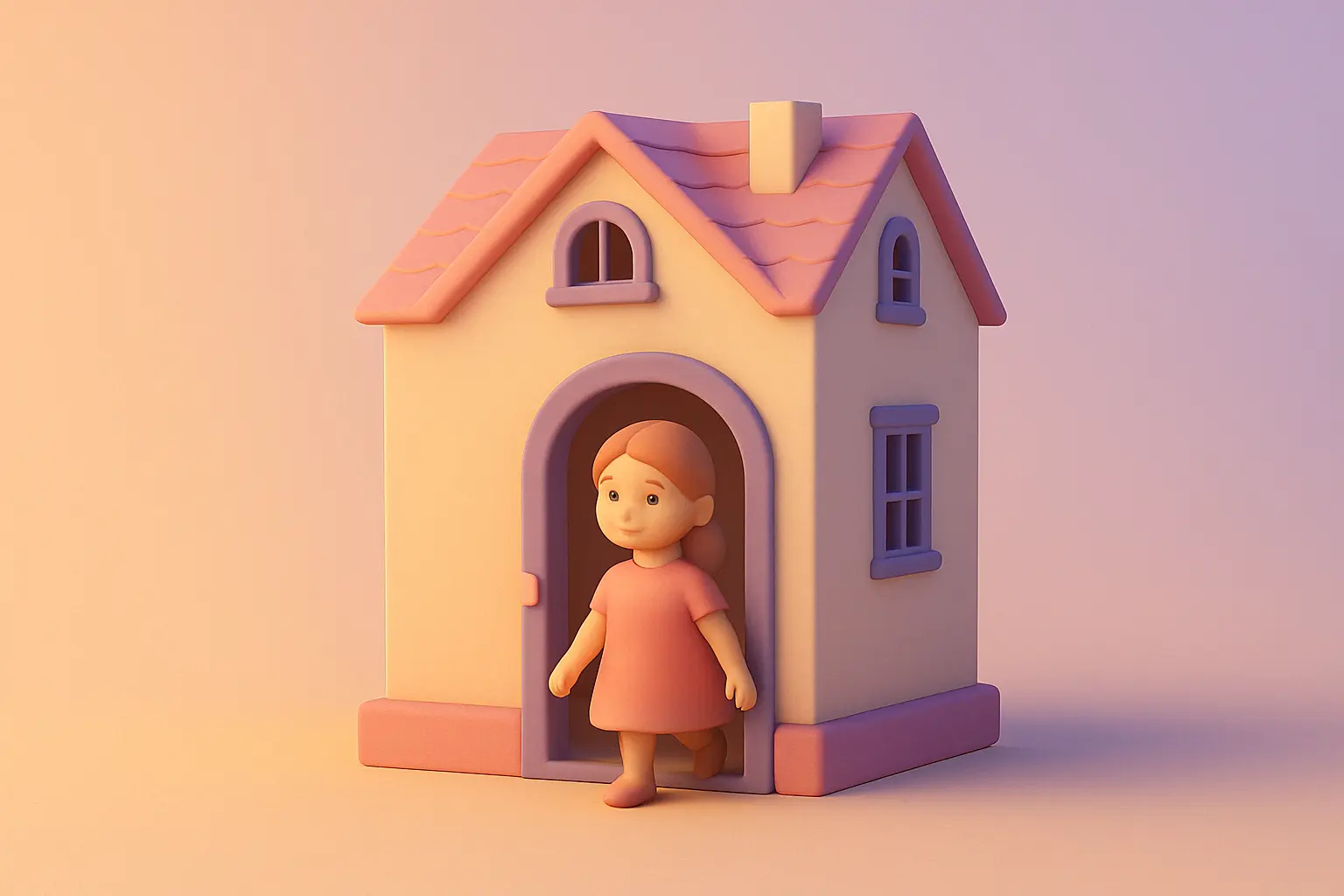
The Dollhouse Was Beautiful — But It Was All for Show
Every room looked perfect. But love was never part of the design.

There’s a kind of silence that doesn’t feel peaceful — it feels unnatural. Almost eerie.
Table Of Contents
A smile on the wall.
A chair no one sits in.
A mother watching soap operas while her daughter becomes the second mother to everyone else.
For Mary, this was childhood.
She wasn’t raised in a home.
She was raised in a museum — a curated fantasy frozen in time.
Every cup, every fork, every clock had to match the “primitive” aesthetic her mother insisted on.
No posters.
No cartoon bedspreads.
No family photos on the fridge.
Even the toilet was curated — a specialty pull-chain model installed by a plumber to preserve the illusion.
If any photos of the children existed at all, they were tucked behind the laundry room door. Hidden. Out of sight. Out of step with the story her mother was trying to tell.
Mary was the oldest of five.
The caretaker. The laundress. The chauffeur. The one who made the house look functional — while quietly crumbling inside.
While her mother lounged with a diet soda, a bowl of M&M’s, and a bag of popcorn, watching soap operas in the living room, Mary packed school lunches, checked homework, folded clothes, and mapped out after-school rides like a full-time assistant.
At sixteen, she didn’t celebrate getting a car.
She dreaded it.
Because it didn’t mean freedom.
It meant more responsibility.
The Pattern and the Price
Mary didn’t grow up in a loving home.
She grew up in a controlled narrative — one where image mattered more than intimacy, and obedience was rewarded with less pain.
Speaking up wasn’t forbidden.
It was punished.
Her mother’s words still echo in her memory:
“If I wanted you to have an opinion, I’d give it to you.”
So Mary did what so many kids do: she adapted.
She made herself small.
She became the helper. The fixer. The peacekeeper.
But there’s another layer, too —
Because when you’re the one who sees the cracks in the show, you often become the one who’s blamed for them.
Mary wasn’t just the oldest.
She was the scapegoat — the child who carried the shame no one else would admit.
The one who was labeled “difficult” for asking questions.
The one who was called selfish or dramatic for needing anything.
The one who got punished not for what she did, but for what others refused to feel.
While Mary handled the chores, the laundry, the rides, the meals —
her younger sister was praised as “the pretty one.”
She was encouraged to model. Treated like a showpiece.
Celebrated in ways Mary never was.
And when a neighbor once asked why Mary wasn’t modeling too —
“She’s so pretty,” they said —
Her mother quickly brushed it off:
“Oh no. Mary’s good at the violin and piano… but she’s too fat for modeling.”
Another time, when homecoming came around,
Mary was told to make her own dress — by hand.
While her sister, the golden child, was taken shopping for a store-bought designer gown.
There was no explanation.
Only a quiet, aching message that Mary was expected to work… while her sister was expected to shine.
It was never going to be fair.
Mary figured that out early.
And like a pro boxer in the ring, she learned how to bob and weave.
How to anticipate moods.
How to avoid triggering another scene.
Only Mary wasn’t a fighter.
She was a child.
And this wasn’t normal.
But it was survival.
Because in systems built on illusion, truth-tellers are dangerous.
And golden children are useful props.
So Mary learned to keep quiet.
To absorb it.
To carry the dysfunction so the rest of the family could pretend it didn’t exist.
Not because she was flawed.
But because she was strong enough to feel what others avoided.
She was resilient.
She was smart.
She bent, not because she was weak — but because she was strong enough to survive.
But the problem is…
What saves you as a child doesn’t always serve you as an adult.
And that’s where the real work begins —
Unpacking the years of invisibility.
The people-pleasing patterns.
The exhaustion of being everything for everyone — while never knowing what you need for yourself.
Because one day, that scapegoated child grows up.
And if she’s lucky, or angry enough, or brave enough…
She begins to realize:
That shell she built to survive?
It’s suffocating her now.
And the walls of the dollhouse?
They’re not keeping her safe anymore.
They’re keeping her small.
✨ Spiritual Insight
In the words of Dr. Wayne Dyer:
“You leave old habits behind by starting out with the thought, ‘I release the need for this in my life.’”
Mary didn’t just grow up in a house.
She grew up in a system designed to shape her — not see her.
A system that told her who she had to be,
and punished her when she stepped outside the lines.
But every time you say:
“This isn’t mine.”
“I don’t want this anymore.”
“I didn’t choose this.”
You shift.
You rise.
Because, as Gregg Braden reminds us:
“The prime rule of reality is that we must become in our lives what we choose to experience in the world.”
This part of the journey isn’t about fighting the old story.
It’s about learning how to live a new one — from the inside out.
Here’s what that might look like in daily life:
• Saying no without explaining yourself
• Setting a boundary and not shrinking afterward
• Feeling your needs without apologizing for them
• Allowing joy — even when no one else understands it
You weren’t born to maintain someone else’s illusion.
You were born to live in your truth.
And that begins by choosing now what you were once denied:
safety, wholeness, and space to be.
🕊️ You Don’t Have to Live in That Dollhouse Anymore
You don’t have to be the quiet one. The responsible one. The one who keeps it all running.
You don’t have to stay small so someone else can feel in control.
You’re allowed to leave the display behind.
You’re allowed to take up space.
You’re allowed to walk out — even if your voice shakes.
Even if no one notices.
Even if they try to guilt you into staying.
Because this time…
You’re not leaving to survive.
You’re leaving to become.
And here’s what that becoming might require:
1. Letting go of the fantasy that they’ll ever acknowledge the truth.
2. Grieving the family you needed but never had.
3. Reclaiming the parts of yourself you buried to stay accepted.
4. Choosing peace over performance — again and again.
5. Coming to peace with the fact that you may never get an apology — or understanding — from the people who hurt you

Because the dollhouse may have been beautiful…
But you were never meant to stay in it.
They Don’t Get the Final Word — You Do
You are not too sensitive. You are not overreacting.
You are waking up to the truth — and the truth is yours now.
Let them rewrite their version. Let them spin their story.
You are free to write your own.
But here’s what they don’t tell you about that freedom:
It can get quiet.
So quiet it hurts.
When you stop agreeing to the unspoken rules,
you may find yourself standing alone.
You may be lied about.
Cut off.
Silenced — not because you’re wrong,
but because your voice is no longer serving the story they need you to play a part in.
The narcissist often holds the strings.
And the others?
They’re too afraid to speak.
So they don’t answer your texts.
They act like nothing happened.
They help punish you — not with anger, but with absence.
You’ll wonder if it’s you.
You’ll question your sanity all over again.
You’ll replay the last message you sent,
asking yourself if it was too much.
But here’s what you need to remember:
You are not being punished — you are being released.
When people remove themselves after you reclaim your voice,
it is not rejection.
It is clarity.
You didn’t lose their love.
You just lost your place in their performance.
And while that loss may ache,
it also makes room for something else:
Wholeness.
Honesty.
Peace that isn’t paid for with silence.
So yes — this next step will ask everything of you.
But it will also give you back to yourself.
And that’s not just healing.
That’s homecoming.
**************************************************************
✨ We hope this post offered something meaningful to you — and if it did, please share it with someone who needs to know they’re not alone.
Because sometimes, the quietest stories are the ones that open the door to healing.
If you’re ready to explore what happens when love becomes something too heavy to hold…
➡️ Continue reading:
When Love Starts to Smother
A soft story for the child who wanted to breathe.
💬 Tell us your story or reflections in the comments below — your voice matters here.
🎧 And don’t forget to subscribe to The Gaslight Files for more healing stories, quiet awakenings, and powerful truths that help you rise.
📚 Explore our recommended reading list on Amazon — curated books that speak to emotional healing, boundaries, and clarity after narcissistic abuse.
📝 Start your healing journey with our daily journaling notebooks — available in both paperback and printable PDF formats.
🎓 Take the next step with our self-paced online courses, where you can explore topics like gaslighting, self-worth, and emotional freedom in a deeper, guided way.
━━━━━━━━━━━━━━━━━━━━━━━━━━
Wishing you peace, growth, and all the best,
~ The Gaslight Files Team






